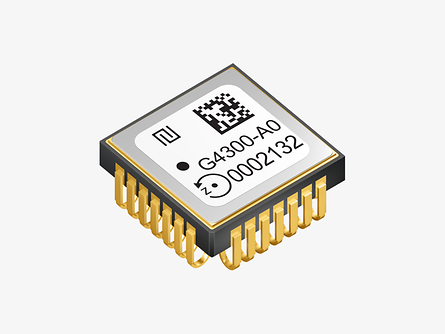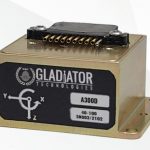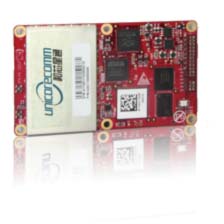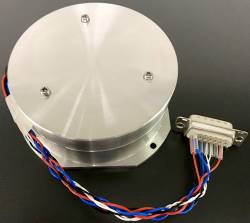TDK Corporation releases Tronics GYPRO®4300, a high stability and vibration-tolerant digital MEMS gyroscope for dynamic applications.
This gyro features a ±300 °/s input measurement range, 200 Hz bandwidth and 1 ms latency with a closed-loop architecture that ensures high linearity and stability in dynamic environments. The GYPRO4300 is the first product reference of Tronics GYPRO4000 new high performance digital MEMS gyro platform which complements the recently announced AXO300 closed-loop digital accelerometers platform.
Precise navigation and positioning in dynamic applications
With an excellent bias instability of 0.5 °/h as typical value (2 °/h maximum) and an ARW (Angular Random Walk) of 0.1 °/√h, GYPRO4300 offers a miniature, digital and low-SWaP (Size, Weight and Power) high performance MEMS gyro that paves the way to a new generation of precise positioning, navigation, and stabilization functions in dynamic applications such as railway, land vehicles, VTOL (Vertical Take-Off and Landing) aircraft and UAV (Unmanned Aerial Vehicles), marine and subsea systems, borehole drilling and surveying instruments.
Miniature and robust gyro for systems operating under vibration conditions
The closed-loop architecture of Tronics GYPRO4300 offers a strong vibration rejection of 0.5 °/h/g² under harsh conditions. GYPRO4300 gyros are housed in a miniature, hermetic, ceramic J-lead package that ensures long operational and storage life and guarantees a high compliance with the stringent thermal cycling requirements of critical applications. They embed a fully hard-coded electronics with a 24-bit digital SPI interface for a swift integration into INS (Inertial Navigation Systems), IMU (Inertial Measurement Units) as well as AHRS (Attitude and Heading Reference Systems). To minimize mechanical cross-coupling in multi-axis applications, GYPRO4300 is available in 3 frequency ranges.
Low-SWaP, cost-effective and high reliability gyroscope
Thanks to its miniature package and low-power consumption, Tronics GYPRO4300 gyro offers a digital, cost-effective, and low-SWaP alternative to bulky, expensive, and power-consuming solutions like DTG (Dynamically Tuned Gyros) FOG (Fiber Optical Gyroscopes). Due to its solid-state architecture that reduces the number of internal components and system complexity, GYPRO4300 demonstrates a MTBF higher than 1,000,000 hours, more than 10 times better than incumbent DTG and FOG with similar performances. In addition, its built-in self-test ensures both an initial verification of the sensor’s integrity and a continuous in-operation functionality test.
GYPRO4300 gyros are ideally complemented by high performance Tronics AXO®300 digital accelerometers that share the same SMD J-lead ceramic package (12 x 12 x 5 mm) and same digital interface to enable low-cost integration, assembly, and reliability on PCB, even in fast-changing temperature conditions.
GYPRO4300 is available for sampling and customer evaluations, directly at Tronics or through specialized distribution channels starting with TEXIM in Europe. Swift evaluation of the sensors can also be made with an Arduino-based evaluation kit that provides built-in testing functionalities such as output reading and recording, recalibration, and digital self-tests.
The GYPRO4000 gyros platform will be soon extended with new product references tailored to application-specific requirements, such as improved bias stability, lower ARW and lower in-band noise for precise attitude determination.
Main applications
- INS for GNSS-assisted positioning and navigation of ground vehicles & trains
- AHRS (Attitude & Heading Reference System) for UAV and e-VTOL
- MRU (Motion Reference Units) for dynamic ship positioning
- IMU for precision robotics and remotely operated vehicles
- Stabilization systems
- Test instrumentation
Main features and benefits
- ±300 °/s range, single-axis gyroscope
- Bias instability: 0.5 °/h (typ), 2 °/h (max.)
- Angular Random Walk: 0.10 °/√h
- Vibration rejection: 0.5 °/h/g2
- Latency: ≤1 ms
- Mean Time Between Failure (MTBF): >1,000,000 hours
- 24-bit digital SPI interface






